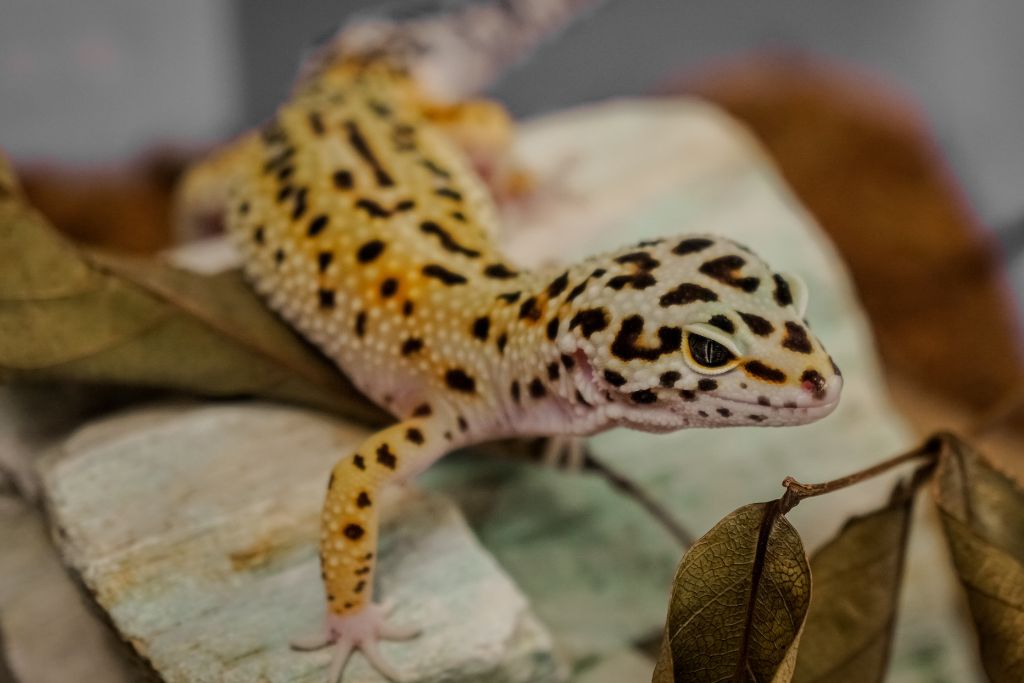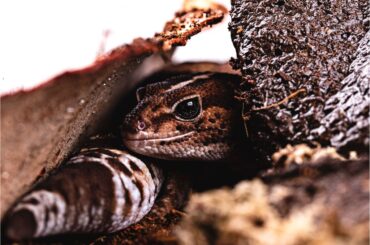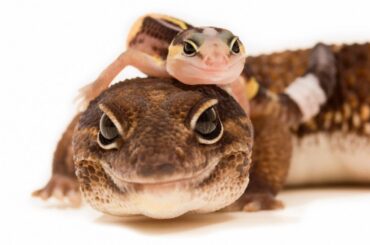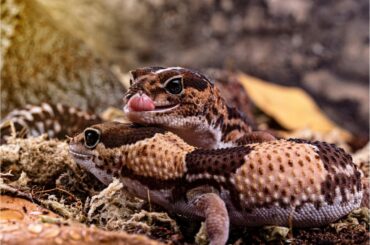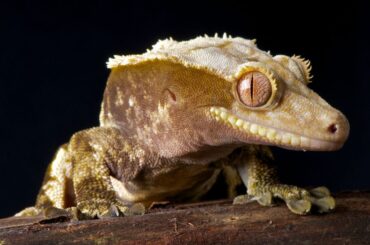What is it about leopard geckos that makes them such popular and interesting pets? Despite being less well-known than cats and dogs, these little creatures offer many intriguing mysteries. They are a joy for pet lovers due to their unique traits and behaviors.
You’re in luck if you’ve wondered what makes leopard geckos exceptional or are interested in reptiles. Explore leopard geckos’ intriguing world and learn why animal lovers of all ages love them.
Remarkable Physical Features:
- Vibrant Colors: Leopard geckos come in a rainbow of colors, including bright yellows, rich oranges, and cool whites. Some even have hints of pink or lavender. This makes them stand out and adds to their charm.
- Pattern Variations: These geckos are like little artists with their patterns. The skin of some has pronounced dark stripes, whereas that of others is covered in specks or swirls. Each one is unique, just like our fingerprints.
- Iconic Spots: The most famous feature of leopard geckos are their spots. These cool patches cover their entire body and come in various sizes and shapes.
- Big Eyes: Leopard geckos have big, expressive eyes that come in various colors. These eyes help them see well in the dark and look adorable.
- Tail Thickness: Take a look at their tails. They are plump and store extra fat, like a built-in snack. They use this fat when food is scarce, making their tails look cute and chubby.
- No Sticky Toes: Unlike other geckos, leopard geckos don’t have sticky toes. They have tiny claws instead, which help them grip and climb without leaving sticky prints behind.
- Smooth Skin: It’s one of the reasons why they’re fun to hold.
Nocturnal Behavior
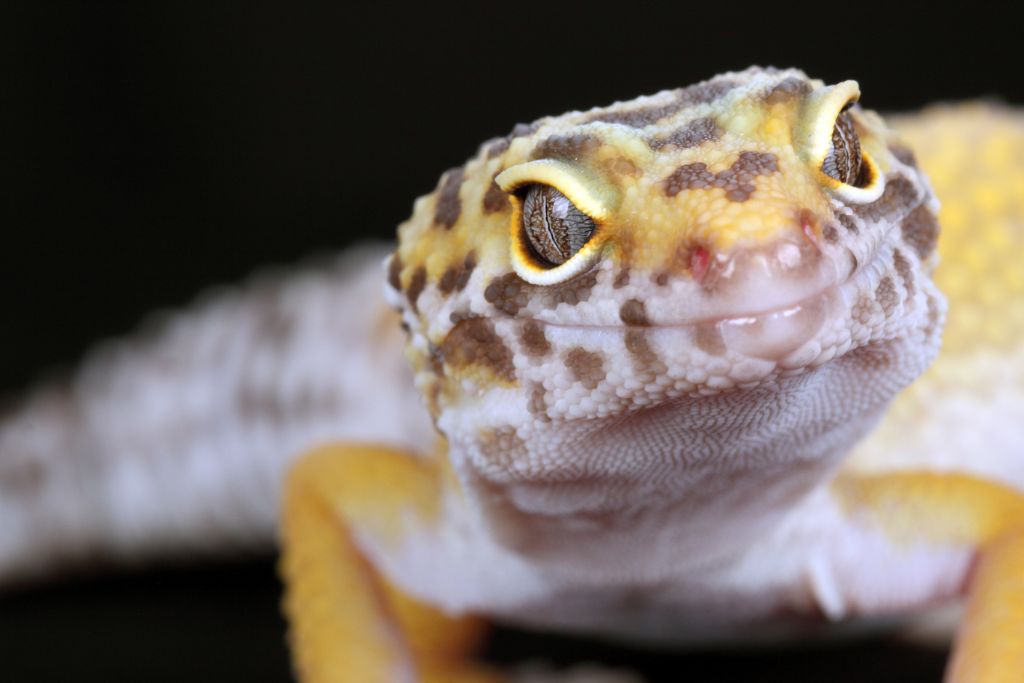
The fascinating leopard gecko is primarily active in the evening and during the night. Their superior night vision is one adaptation that allows them to thrive in the dark. These geckos can see and hunt in total darkness due to their sensitive eyes.
They possess sensitive skin covered in tiny scales, which can detect vibrations and subtle movements around them. This feature helps them hunt for prey and avoid potential predators in the darkness.
Feeding Habits
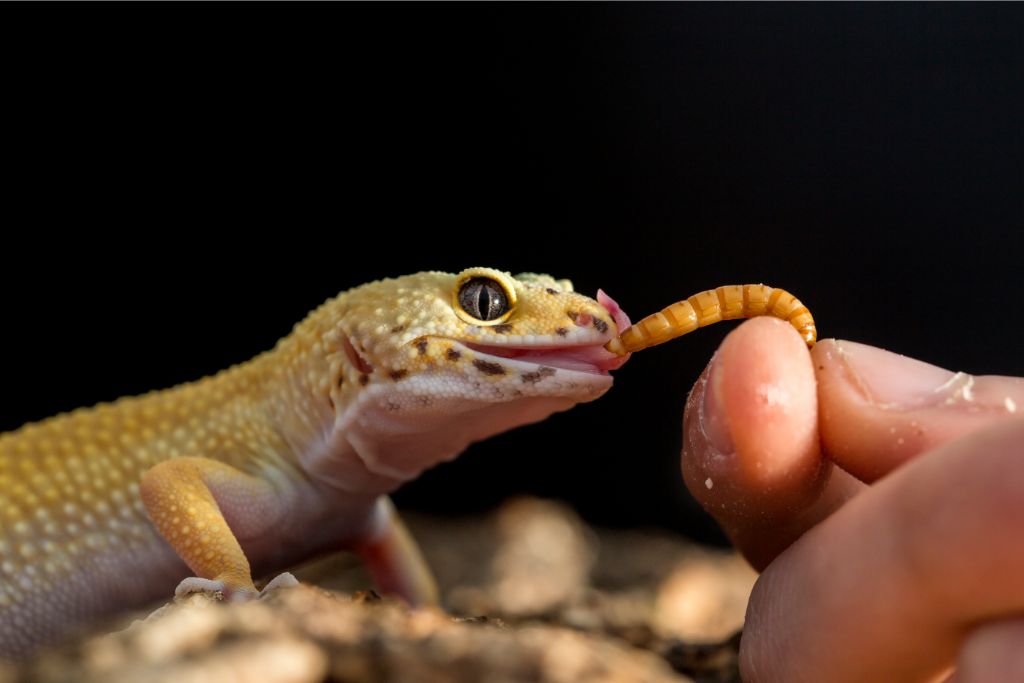
Leopard geckos are fascinating creatures with some unique eating habits. These little reptiles strongly prefer live insects as their primary food source. Their diet is crickets, mealworms, and other small invertebrates; they don’t like fruits or vegetables.
This carnivorous diet is crucial for their health and longevity. Eating live insects helps leopard geckos get the essential nutrients they need to thrive. Protein-rich insects give geckos a boost, making them stronger and more active, which is one of leopard gecko fun facts that make them such intriguing pets.
Temperature Requirement
Proper temperature regulation is important for leopard geckos because it helps them stay healthy and happy. They’re cold-blooded, so they don’t have body heat like we do. That’s why they rely on their environment to stay at just the right temperature.
Inside their homes, called enclosures, leopard geckos need something called a temperature gradient. This is like having different temperature zones in their house. They like it warm on one side and cooler on the other.
They use heat sources, like heat mats and basking spots, to ensure they have these different temperature options. These heat mats warm the floor, and the basking spot is like a warm rock where they can relax. This allows them to walk about and choose their preferred temperature, making them happy geckos!
Varied Color Morphs
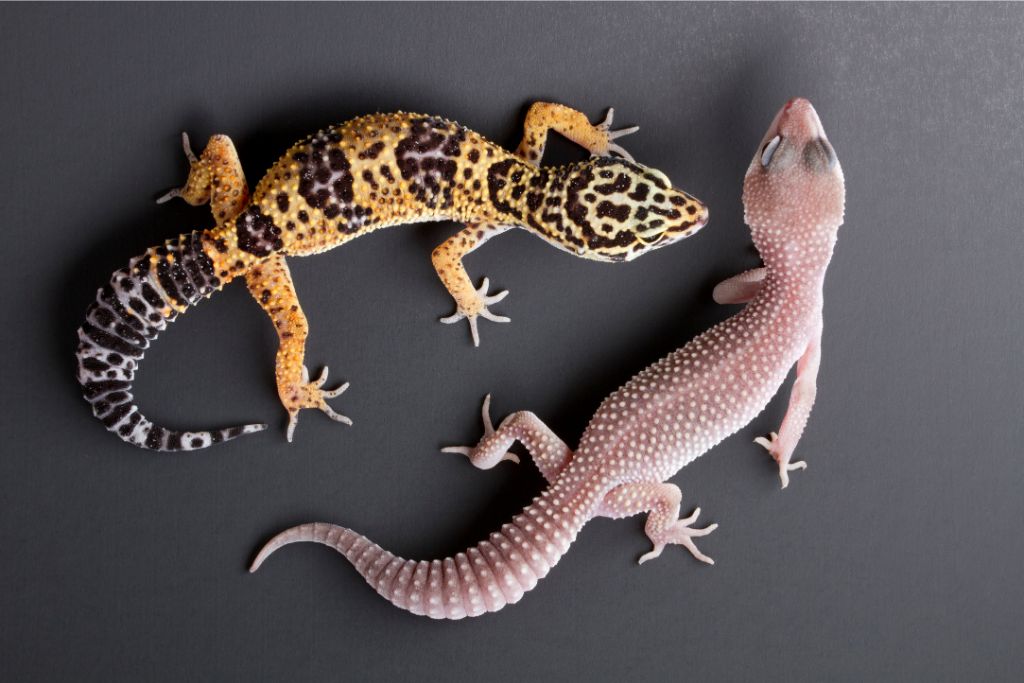
Leopard geckos are fascinating reptiles known for their amazing variety of colors and patterns. These little creatures come in a rainbow of shades and designs that make them stand out in the world of reptiles. Albinos, melanistic, and pattern variations are popular morphs.
Albino leopard geckos are famous for their pure white skin and striking red eyes. Their species lack the usual dark pigments, giving them this ghostly appearance. Melanistic leopard geckos, unlike albino ones, are almost totally black. These geckos have an abundance of dark pigments, resulting in their stunning ebony color.
These incredible variations have been achieved through selective breeding. Breeders select geckos with desirable colors or patterns and mate them to pass on those features. This procedure has created many leopard gecko variants, making them popular pets for reptile lovers worldwide.
Low-Maintenance Care
Due to their low maintenance needs, leopard geckos make excellent first reptile pets. They’re not picky eaters, enjoying a diet of insects, like crickets and mealworms. They don’t need fancy lighting setups like some other reptiles. A simple heat pad or overhead lamp can keep them warm and happy.
Leopard geckos are low-key when it comes to cleaning their habitat. Unlike some reptiles that demand constant cleaning, these guys keep things tidy. They are not big on socializing, so they will only require a little attention.
Gentle and Docile Temperament
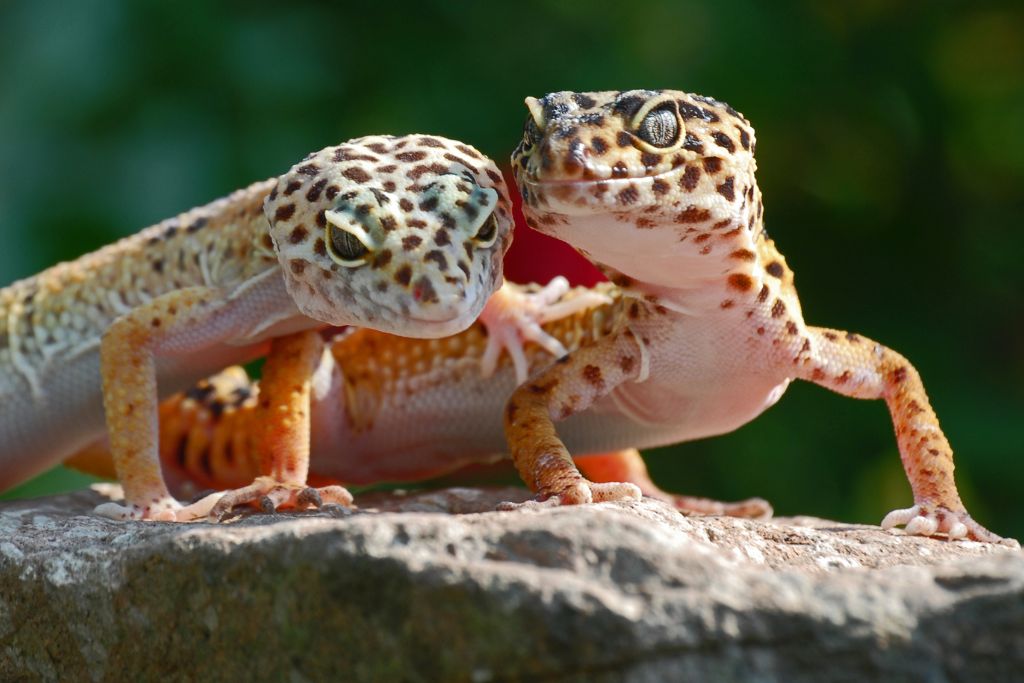
Leopard geckos are renowned for their gentle and docile nature, making them fantastic pets. These little reptiles are known for their calm demeanor and are often quite comfortable being held. They are not the type to bite or snap when you pick them up. They sit quietly in your palm or arm, making them ideal for youngsters and families.
Building trust with your leopard gecko is essential, and regular, gentle interaction is the key. You show them that you are a friendly presence by handling them regularly. Over time, they identify you and get used to your touch. Trust-building is like establishing a new friend—the more you spend together, the stronger your bond.
Shedding Process
These fascinating creatures shed their old skin as they grow. This shedding process helps them stay healthy and comfortable. To ensure a successful shed, it’s crucial to maintain the correct humidity levels in their habitat.
Why Leopard Geckos Shed
Leopard geckos lose skin because they grow continuously, like all reptiles. Shedding allows them to get rid of old skin that may have become tight or damaged. It also helps remove any parasites or dirt clinging to their scales.
Signs of an Upcoming Shed
You might notice some signs before a leopard gecko sheds. Their skin may look dull, and their eyes appear cloudy or opaque. This indicates shedding is going to begin.
Tail Regeneration
Leopard geckos amaze with their tail-regrowing ability! When a leopard gecko feels threatened or attacked, it can detach its tail as a defense mechanism. This tail loss distracts the predator, giving the gecko a chance to escape.
After losing its tail, a leopard gecko can grow it back! This regrowth process is quite fascinating. It starts with a special kind of tissue that forms a bud at the tail’s stump. This bud grows into a brand-new tail with scales, skin, and even bones.
While the regenerated tail might not look the same as the original, it still serves its purpose. This ability helps leopard geckos survive in the wild by providing them another chance to avoid danger.
Myth Debunking
- Leopard Geckos Can Regenerate Limbs: One common misconception is that leopard geckos can regrow limbs. This is false. If they lose their tails, they can regenerate them, but not their legs.
- All Geckos Can Vocalize: Another myth is that all geckos can make sounds or vocalize. Leopard geckos are mainly silent and cannot create the charming gecko noises you hear in movies.
- Leopard Geckos Can Change Colors Like Chameleons: Contrary to what some may believe, leopard geckos cannot change color like chameleons. Their coloring is constant. It may vary somewhat across individuals.
- They Require Lots of Water: Some think leopard geckos need a lot of water to thrive. In truth, they are desert-dwellers and get most of their hydration from their food. A shallow dish of water is sufficient for them.
- They’re Aggressive Creatures: Leopard geckos were once considered dangerous, but they’re actually very docile and make terrific pets when handled gently.
- They Can Climb Walls Like Other Geckos: Leopard geckos are not great climbers, unlike other gecko species. They are terrestrial and prefer to stay on the ground or in low hiding spots.
- All Leopard Geckos are the Same: Leopard geckos come in various morphs and colors, so not all look alike. Each one has its unique pattern and appearance, making them fascinating pets to own.
Conclusion
Leopard geckos are crucial in our ecosystem as natural pest controllers. These small but powerful reptiles control insect populations, maintaining environmental equilibrium.
Leopard geckos have also made their way into our hearts as cherished pets. Their unique personalities and low-maintenance care make them wonderful companions for people of all ages. By knowing leopard geckos’ role in the ecosystem and their joy as pets, we may respect them and all living things.
FAQs
How Do I Know If My Leopard Gecko is Happy?
You can gauge your leopard gecko’s happiness by observing its activity level, healthy eating habits, and vibrant coloration. A content leopard gecko will also have a clean and well-maintained habitat with suitable temperature and humidity.
What is the Gecko’s Weakness?
Temperature extremes are lethal for most geckos, leopard geckos included. They require specific temperature ranges for proper health, and exposure to temperature extremes can lead to stress, illness, or even death.
How Do You Know If Your Pet Gecko Likes You?
Geckos don’t express emotions like mammals, but a gecko that tolerates handling without signs of stress (such as hissing or fleeing) may be more accustomed to your presence. Consistent, gentle interaction can help build trust over time.
Do Leopard Geckos Have A Personality?
Leopard geckos exhibit individual behaviors and preferences, which can give the impression of personality differences. Some may be naturally gregarious and inquisitive, others may be more introverted and reticent. Knowing your specific gecko’s habits and needs is important for their well-being.

